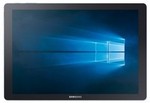Samsung Galaxy Tab Pro S 12" 4G Pro SM-W708YZKAXSA currently at jb hifi fo $1398.
Brand new come with full warranty + tax invoice (TRS Claimable). Telstra Stock. Free 5gb telstra data sim.
You can also pick it up for cash and we can do $950 for cash pickups from our store in Stkilda or Reservoir, Vic
Key Features
4G capability
12.0" Full HD + Super AMOLED display
4GB RAM
128 GB Solid State Drive
Keyboard book cover included
5 MP Main and front facing cameras
Full HD video record
Wi-Fi 802.11a/b/g/n/ac 2.4 GHz + 5 GHz MIMO
Bluetooth & NFC
5,200 mAh battery (Up to 10.5 hours / Fast Charging)
USB 3.1 (Type-C)
Windows 10 Pro
Cheers




Nice deal. Its just that im looking for something more affordable, so many IT deals recently, and my wallet is getting thinner and thinner.